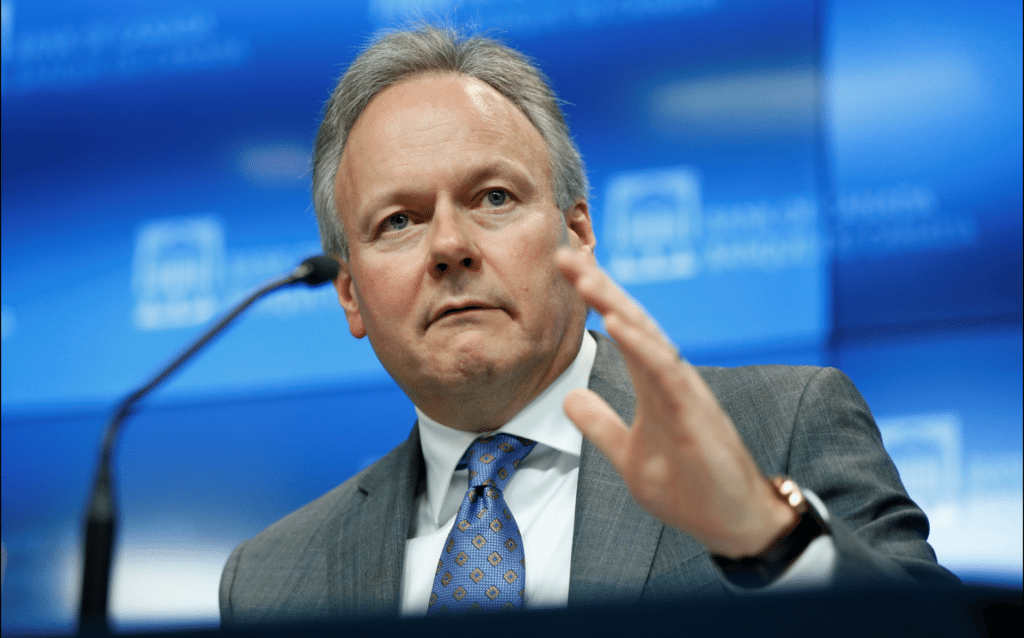
Last week the Bank of Canada met for its April interest rate meeting and made the decision to keep its key interest rate at its current level of 1.25%. This was widely expected; most economists believed that the bank would not increase interest rates at this time. The Bank of Canada governor Stephen Poloz cited a number of underlying reasons for his decision and struck a very cautious tone regarding future rate increases.
It appears that multiple factors were behind this decision. Factors included uncertainty regarding NAFTA, trade protectionism coming out of Donald Trump’s Whitehouse, potential for trade tariffs, and the Bank of Canada governor feeling that as well as the economy has been doing, there is more gas left in the tank. He believes that our economy can grow a bit more before pushing inflation up to levels that are too high. He believes there’s more room than most expect or believe, as we have been underperforming as an economy for the better part of the last decade.
He’s also very aware of many provincial and national regulations that have been put in place recently, as well as the new OFFSI mortgage rules that were unveiled in January. He wants to see those work themselves through the economy before making any interest rate increases. The OFFSI mortgage rules that were unveiled in January effectively cut home buying power by 20% and has bought him some extra time as he no longer has to increase interest rates to keep the housing market from growing too quickly.
At this point, the governor has basically stated that he’s going to take a “wait and see” approach, watch the data, and raise the rates when the time is right. He has stated that rates should really be in the 2 to 3% range based on a number of economic factors. Everything is pointing to rates needing to be raised, but they’re keeping them artificially low in order to continue to expedite economic growth.
After 2008, they dropped interest rates down to very low levels in order to stimulate the economy. Obviously, we have now moved past that point, and so they are lifting rates back to normal levels. They just don’t want to do it too quickly.
Some have asked what’s going to happen with higher interest rates and the new mortgage rules — whether it’s too much for the real estate market to handle. There’s a number of factors at play here. Interest rates will still be historically low even at 2% or 3%. My feeling is that once interest rates are brought back closer to where they should be, OFFSI will probably start to roll back some or all of the mortgage rules that they have brought into play.
I do not believe that the 20% stress test introduced in January will be here indefinitely. Once rates get back to more sustainable levels, they will probably be rolled back. I don’t fear that there may be a situation in which the housing market cannot handle the changes that are being made. I fully expect a very carefully coordinated response and I believe that the measures are temporary. The Bank of Canada wants to see a growing real estate market. None of these measures were mean’t to lower houses prices. They were meant to slow growth to prevent Canadian’s from taking on too much debt until interest rates normalize. Aside from that, the fundamentals of the real estate market in the Greater Golden Horseshoe remain very strong. Continued growth in housing prices is inevitable as housing supply problems persist and our population explodes.
Long story short, I do not worry about the stress in combination with higher interest rates. I believe we will be able to absorb the increases over time and I fully believe that OFFSI will remove the stress test when they feel the time is right.
Rates remain at historic lows; 1.25% is still an unbelievable rate. Buyers, this is your opportunity to get into the market before rates increase. The Bank of Canada is already telling you that rates will be normalizing to pre-recession levels. Most economists expect another two interest rate increases before the year is up, probably pegging us around the 1.75% mark. Now is the time to get ahead of the interest rate increases, because they are coming.


